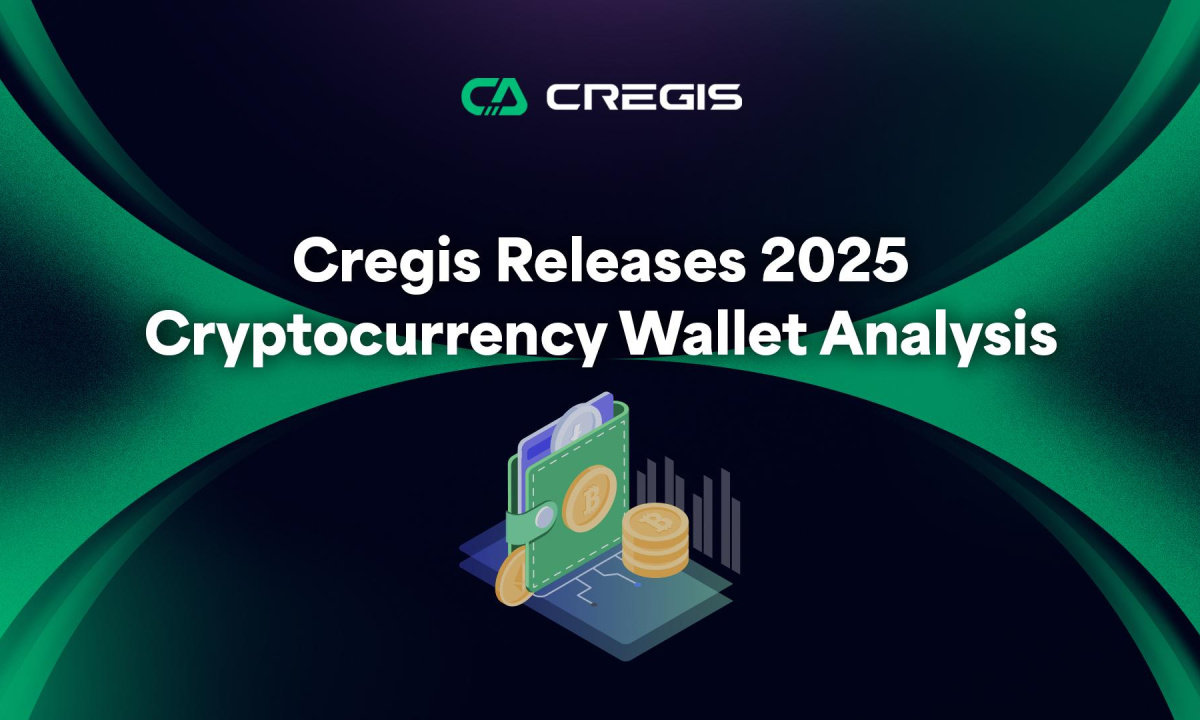
Dubai, Dubai, September 21st, 2025, FinanceWire
As digital assets become increasingly embedded in the global financial ecosystem, the role of cryptocurrency wallets has grown more critical than ever. To better understand this rapidly evolving sector, Cregis, a leading provider of blockchain wallet infrastructure, has conducted a comprehensive analysis of the cryptocurrency wallet landscape for 2025. This research brings together insights from technological trends, security paradigms, and user adoption patterns, with the aim of equipping both enterprises and individual users with the knowledge needed to make informed decisions.
Understanding Cryptocurrency Wallets
At their core, cryptocurrency wallets do not store coins directly, but rather safeguard the public and private keys that provide access to assets recorded on the blockchain. Public keys act as addresses visible to others, while private keys function as passwords granting ownership and control. Maintaining security over these keys is paramount, as theft or compromise can result in irreversible loss of funds.
Wallets are generally classified into two categories:
Hot wallets, which exist as software on mobile, desktop, or web-based platforms. These are ideal for frequent trading due to their speed and convenience.
Cold wallets, typically hardware devices, which prioritize security and are often chosen by long-term holders and institutional investors.
The decision between hot and cold wallets depends on a range of factors — including trading frequency, the types of assets held, transaction volumes, and the level of security required.
Key Market Trends in 2025
Cregis’s research identifies several dominant trends shaping the wallet infrastructure space in 2025:
Enterprise-Grade Solutions Leading Market Evolution
Institutional adoption is driving innovation in wallet design. Enterprise platforms such as Fireblocks exemplify this trend, with features like workflow automation, compliance tools, and audit trails becoming standard.
Rise of MPC Technology
Multi-Party Computation (MPC) represents a transformative shift in wallet security. By splitting private keys into encrypted shares across multiple devices or parties, MPC eliminates single points of failure while enabling collaborative management. Protocols such as GG18 further enhance transaction security by allowing distributed signing without reconstructing the full key.
Mobile-First User Experience
Mobile wallets such as Trust Wallet continue to lead adoption due to intuitive interfaces and wide asset support. As crypto demographics broaden, mobile-first design has become a non-negotiable feature for most users.
Web3 Integration as a Standard
What was once a niche feature is now a baseline expectation: wallets must integrate seamlessly with decentralized applications (dApps). Solutions like MetaMask set the benchmark for DeFi and NFT engagement, reflecting the centrality of Web3 in the modern crypto ecosystem.
Hardware Security for High-Value Holders
Cold wallets, particularly advanced hardware devices such as Ledger Nano Flex, remain indispensable for high-value investors. Innovations such as secure chips and enhanced user interfaces ensure that cold storage continues to serve as a premium option.
Market Leaders: Best Wallets of 2025
Based on Cregis’s evaluation of more than 30 technical and usability data points, the following wallets represent the leading solutions across key categories:
Cregis — Best Overall Wallet: Combining advanced MPC security, multi-chain support, WaaS APIs, and scalability, Cregis serves individuals, small businesses, and enterprises alike. Its ecosystem approach — including crypto off-ramp, payment engine, and TronGas Station — makes it uniquely versatile.
Trust Wallet — Best Mobile Wallet: Offers wide asset support, user-friendly design, and built-in token swaps.
MetaMask — Best Web3 Wallet: Industry standard for dApp integration, highly customizable for DeFi and NFTs.
Ledger Flex — Best Hardware Wallet: State-of-the-art cold storage with tamper-proof security and multi-asset support.
Fireblocks — Best Enterprise Wallet: Preferred by institutions for its secure MPC infrastructure, automated workflows, and compliance readiness.
Key Considerations for Wallet Selection
When evaluating a wallet, users and organizations should weigh factors such as:
Trading frequency: Hot wallets for active traders, cold wallets for long-term holding.
Asset variety: Ensure multi-chain support for diverse portfolios.
Security requirements: MPC and hardware-level security for higher-value or institutional use cases.
Functionality: Look for staking, lending, or WaaS integration depending on business needs.
Cost and scalability: Balance affordability with the ability to scale for growing platforms.
Industry Outlook
The cryptocurrency wallet sector in 2025 reflects a dynamic interplay of innovation, security, and usability. The shift toward MPC technology, the rise of Web3-native wallets, and the persistence of hardware security all illustrate the diversity of solutions meeting the needs of traders, investors, and enterprises alike.
Cregis’s research underscores one central insight: as adoption accelerates, wallets are no longer just storage tools but critical infrastructure for digital asset management and trust in Web3. With enterprise-grade security, user-centric design, and scalable integrations, the next generation of wallets — led by solutions like Cregis — are shaping the future of the digital economy.
About Cregis
Cregis is a global provider of enterprise-grade digital asset infrastructure, delivering secure, scalable, and compliant solutions for institutional clients.
Its core offerings—MPC-based self-custody wallets, Wallet-as-a-Service, and a robust Payment Engine—help exchanges, fintech platforms, and Web3 businesses manage digital assets with confidence.
With over 3,500 businesses served globally, Cregis empowers businesses to accelerate their Web3 transformation and unlock new digital asset opportunities.
Contact
Marketing



